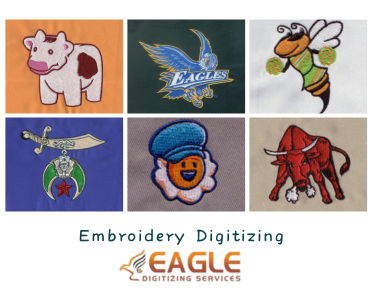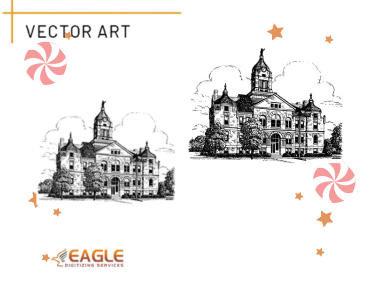Easy Steps: How Do You Transfer a Design onto Fabric for Embroidery
Transferring a
design onto fabric is a vital step in the embroideryprocess, bridging the gap between creative vision and tangible artistry.
Whether you’re embellishing a handkerchief or crafting a personalized quilt,
the method you choose for design transfer can significantly affect the outcome.
Understanding the intricacies of various transfer techniques allows you to
breathe life into your ideas, transforming simple fabrics into exquisite
masterpieces.
The Importance of Accurate Design Transfer in Embroidery Projects
Accuracy is
paramount in embroidery; a misplaced stitch can mar an otherwise flawless
design. Effective transfer methods ensure that every line, curve, and detail of
your artwork translates faithfully onto the fabric. When executed properly,
design transfer sets the stage for successful stitching, reducing the risk of
errors and enhancing the overall quality of your project. In the world of
embroidery, precision in transferring designs is the difference between
mediocrity and mastery.
Popular Design Transfer Methods Explained
The
Iron-On Transfer Method: Quick and Easy
The iron-on
transfer method is beloved for its simplicity and speed. This technique
involves printing your design onto special transfer paper and then using heat
to bond it to the fabric. The convenience of this method makes it perfect for
quick projects or for those who may be new to embroidery. Be mindful of your
fabric’s heat tolerance, as some materials may scorch or warp under high
temperatures. You can achieve crisp, vibrant designs that stand out with a
little practice.
Using
Transfer Paper: A Step-by-Step Guide
Transfer paper
offers a versatile way to transfer designs, allowing for intricate details and
a variety of fabrics. To start, print your design
on the transfer paper, ensuring you follow the manufacturer’s instructions
regarding printing settings. Cut the design closely to eliminate excess paper,
then position it on the fabric. Applying pressure and heat to bond the design
using an iron or heat press, following the recommended time and temperature
guidelines. Once cooled, gently peel away the backing, revealing your beautiful
design. This method is perfect for detailed graphics that require precision.
The
Tracing Method: Traditional and Timeless
The tracing
method is a classic approach that has stood the test of time. This technique
involves placing your design beneath a piece of transparent fabric or tracing
paper and then carefully tracing over it with a fabric marker or pencil. The
beauty of this method lies in its simplicity; it requires minimal materials and
can be done on virtually any fabric. Tracing allows for greater control over
the final design, making it a favorite among artists who prefer a hands-on
approach.
Transferring Designs with Lightboxes and Projectors
Why
Lightboxes Are a Game Changer for Design Transfer
Lightboxes have
revolutionized the way designs are transferred onto fabric. By illuminating
your design from beneath, a lightbox allows you to see the details clearly,
making it easier to trace directly onto the fabric. This tool is especially
beneficial for intricate patterns or multi-layered designs, where precision is
key. Lightboxes can streamline the transfer process and significantly enhance
accuracy, reducing the chances of errors during stitching.
Using
a Projector to Enlarge Designs: Tips for Precision
Projectors offer
a modern twist on design transfer, enabling you to enlarge and project images
directly onto your fabric. This method is particularly useful for larger
projects or when working with complex designs that need to be scaled up. When
using a projector, ensure your workspace is dimly lit for optimal visibility,
and adjust the focus to ensure clarity. This technique allows you to maintain
proportion and detail, creating a seamless transition from digital design to
fabric art.
Setting
Up Your Workspace for Optimal Light Transfer
Creating the
right environment for light transfer is crucial for success. Ensure your
workspace is well-organized and free from clutter, providing ample room for
your fabric, light source, and any necessary tools. When using a lightbox or
projector, set up in a dimly lit area to enhance visibility. Position the
lightbox or projector at a comfortable height to avoid straining your neck or
eyes. With an organized and well-lit workspace, you can focus on bringing your
designs to life without distractions.
The Art of Using Carbon Paper
Carbon
Paper Basics: How to Use It Effectively
Carbon paper
remains a tried-and-true method for transferring designs, especially in
traditional embroidery. To use carbon paper, place the carbon sheet beneath
your fabric, positioning it under the design you want to transfer. Then, trace
over the design with a pen or stylus, which will imprint the design onto the
fabric. The beauty of carbon paper lies in its ability to capture fine details,
making it an excellent choice for intricate patterns.
Tips
for Achieving Clean Lines with Carbon Paper Transfers
Achieving clean
lines with carbon paper transfers requires a steady hand and some practice. Use
a light touch when tracing to avoid tearing the carbon paper or smudging the
design. Additionally, choose high-quality carbon paper designed specifically
for fabric to ensure that the transfer is clear and precise. If you notice any
smudging, try using a fabric eraser to gently remove imperfections before
proceeding with stitching. With patience and attention to detail, carbon paper
can yield stunning results.
Troubleshooting
Common Issues: Smudges and Misalignment
Despite its
reliability, carbon paper transfers can sometimes present challenges.
Misalignment and smudges are common issues that can arise during the transfer
process. To minimize these problems, take your time when tracing, and
double-check the placement of your design before committing to the transfer. If
you do encounter a smudge, don’t fret; often, it can be covered with stitches during embroidery. Learning to navigate these
hiccups will enhance your skills and improve your overall experience.
Hand Drawing Designs Directly on Fabric
The
Benefits of Freehand Drawing for Unique Touches
Freehand drawing
on fabric offers a personal touch that can make your embroidery truly
one-of-a-kind. This method allows for spontaneous creativity, enabling you to
express your artistic vision without the constraints of pre-made designs. The
organic nature of hand-drawn elements adds character and charm to your
projects, resulting in pieces that tell a story and reflect your individuality.
Essential
Tools for Drawing on Fabric: Markers, Pencils, and More
To successfully
draw on fabric, gather essential tools like fabric markers, pencils, and even
chalk. Fabric markers come in various colors and are designed to be permanent
once set, while fabric pencils allow for easy erasing and adjustments before
the final lines are set. For temporary designs, chalk can be an excellent
choice. Experimenting with different tools will help you find the best fit for
your drawing style and fabric type.
Techniques
for Transferring Designs with Hand-drawn Elements
When incorporating
hand-drawn elements into your embroidery, consider layering your designs. Start
with a light sketch to outline the primary shapes, then build on this
foundation with detailed lines and shading. Practice is key; take time to
refine your drawing skills on scrap fabric before committing to your final
project. Hand-drawn designs can add a delightful flair to your embroidery,
transforming ordinary pieces into extraordinary works of art.
Utilizing Water-Soluble Stabilizers
What
Are Water-Soluble Stabilizers and How Do They Work?
Water-soluble
stabilizers are a remarkable tool in the embroidery toolkit, providing support
without leaving a trace. These stabilizers dissolve in water, making them ideal
for projects where you want to avoid residue. They come in sheets or films and
can be placed under or on top of the fabric, offering stability during
stitching. Their unique properties make them a go-to choice for delicate
fabrics or intricate designs.
Step-by-Step:
Using Water-Soluble Stabilizers for Design Transfer
To utilize
water-soluble stabilizers effectively, begin by cutting a piece slightly larger
than your design. Place it over your fabric, ensuring it’s smooth and
wrinkle-free. Then, trace or draw your design onto the stabilizer using a
fabric pen or marker. Once your design is complete, stitch as you normally
would. After finishing, rinse the fabric in warm water, allowing the stabilizer
to dissolve and leave behind a clean, crisp design. This technique is
particularly useful for maintaining clarity in delicate fabrics.
Advantages
of Water-Soluble Stabilizers in Embroidery
Water-soluble
stabilizers offer numerous benefits, including versatility and ease of use.
They eliminate the hassle of removing traditional stabilizers that can leave
behind stubborn residues. This type of stabilizer also provides support during
the stitching process, preventing puckering and distortion. Additionally, they
work well for both machine and hand embroidery, making them a valuable addition
to any embroiderer's toolkit.
Transferring Digital Designs onto Fabric
How
to Prepare Digital Designs for Fabric Transfer
Preparing digital designs for fabric transfer involves several
steps. Start by selecting a high-resolution image to ensure clarity and detail.
Resize the design according to your project needs, maintaining its proportions.
Additionally, consider the color scheme and how it will translate onto fabric;
not all colors will look the same once printed. Once satisfied, save the design
in a format compatible with your printer or transfer method.
Techniques
for Printing Designs on Fabric: Inkjet vs. Laser
When it comes to
printing designs on fabric, both inkjet and laser printers have their pros and
cons. Inkjet printers typically produce vibrant colors and intricate details,
making them suitable for colorful designs. However, inkjet prints may require
special fabric sheets to ensure durability. Laser printers, on the other hand,
offer durability and precision, but their color range may not be as broad.
Choosing the right printer depends on your project’s requirements and the
desired outcome.
Tips
for Using Fabric-Friendly Inks and Printers
To achieve the
best results when printing designs onto fabric,
always use fabric-friendly inks. These inks are specially formulated to adhere
to the fabric and withstand washing without fading. Make sure to follow the
manufacturer’s instructions for setting the printer, as temperature and paper
type can affect the final print quality. Additionally, pre-treating your fabric
with a fabric medium can enhance ink adhesion, resulting in a professional
finish.
Mastering design transfer techniques is an essential skill that can elevate your embroidery projects to new heights. With careful planning, preparation, and practice, you can ensure that every design you transfer onto fabric not only meets your expectations but also showcases your unique artistic vision. So gather your materials, unleash your creativity, and watch as your ideas come to life in vibrant stitches!
.png)


